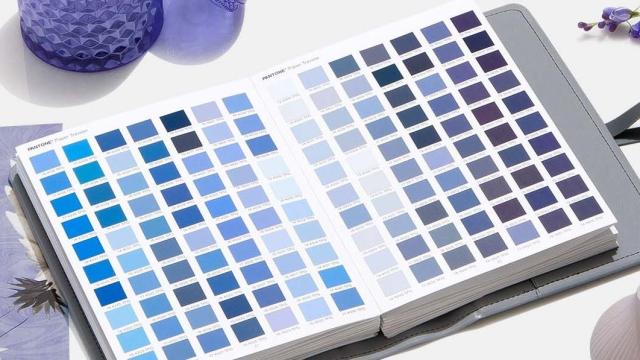It’s very likely you don’t give a great deal of thought to where the digital colours you use originally came from. Nor, probably, have you wondered who might “own” a particular colour, when you picked it when creating something in Photoshop. But a lot of people are about to give this a huge amount of their attention, as their collection of PSD files gets filled with unwanted black, due to a licensing change between Adobe and Pantone.
As of now, widely used Adobe apps like Photoshop, Illustrator, and InDesign will no longer support Pantone-owned colours for free, and those wishing for those colours to appear in their saved files will need to pay for a separate licence. And this is real life.
Pantone has been around since the 1950s, the New Jersey company originally refining printing inks, then later inventing the Pantone Colour Matching System, used worldwide by designers to ensure a creation’s colour will be exactly as desired, no matter where or how it’s manufactured. So, of course in becoming the industry-standard for colour-matching, the company naturally asserts ownership of all its 2,161 hues, defending its intellectual property and preventing its unlicensed use. This extends as far as preventing others from creating “Patone-compatible” colour systems. Or, to put it another way, they claim to own colours.
Last year’s announcement that Adobe would be removing the Pantone “colour books” from its software brought consternation in the design world. One industry standard being removed from another was obviously going to create issues, but at the time Adobe said it would be “working on an alternative solution,” while rumours spread that the companies had had a falling out.
Since then, the official reasons given haven’t made a great deal of sense. According to Pantone, the two companies started working together in the 1990s, but “since 2010, the Pantone colour libraries within Adobe’s apps have not been updated.” This, apparently, means they’re “significantly out of date and missing hundreds of new Pantone Colours.” (Yes, the company seriously capitalises “Colour”.) This means that, “Pantone and Adobe have together decided to remove the outdated libraries and jointly focus on an improved in-app experience that better serves our users.”
Fun times ahead for #Adobe designers. Today, if you open a PSD (even one that’s 20 years old) with an obscure PANTONE colour, it will remove the colour and make it black. Pantone want US$21/month for access, and Solid Coated goes behind the paywall in early November. pic.twitter.com/BUxzViYFaQ
— Iain Anderson (@funwithstuff) October 28, 2022
The removal of Pantone’s colours from Adobe’s software was meant to happen March 31 this year, but that date came and went. It was then due for August 16, then August 31. However, this month, people are noticing the effects, reporting issues with creations using Pantone’s spot colours. And the solution? It’s an Adobe plug-in to “minimise workflow disruption and to provide the updated libraries to the Adobe Creative Cloud users.” Which, of course, costs $US15 ($21) a month. It’s Netflix, but for colouring in!
However, Pantone still states in its out-of-date FAQ that, “This update will have minimal impact on a designer’s workflow. Existing Creative Cloud files and documents containing Pantone Colour references will keep those colour identities and information.” Yet today, people are reporting that their Photoshop is informing them, “This file has Pantone colours that have been removed and replaced with black due to changes in Pantone’s licensing with Adobe.”
Others have reported that even attaching a Pantone licence within Photoshop isn’t fixing the issue, colours still replaced by black, and workarounds sound like a pain.
We’ve reached out to both Pantone and Adobe, and will update should either get back to us.
We, as a species, are in a very interesting time when it comes to so-called “Intellectual Property.” As rules applying to physical objects were poorly imposed on digital items, usually controlled by those with the most money to spend and lose, we’ve seen this sort of nonsense spread from music to movies to digital art, and now the very colours they’re made from themselves. And it always seems to end in our having to pay even more money.
It’s also just becoming more common to have to pay for aspects of services that used to be free. BMW charges some people for heated seats.
There are workarounds to this specific issue, however. Not least freeing yourself from the misery of such closed software, where ridiculous situations are able to breed like rabbits. There’s Free Software like Gimp, and free, open colour schemes like Open Colour. Of course, there are always introduced difficulties when stepping away from industry standards, but then, if we all did it, those problems would go away pretty fast.
If you need or want to stick to Adobe projects, then there are solutions there too. Free ones. Check out the video below for one.
Another tip suggested by Print Week is to back up your Pantone libraries, then re-importing them when your Adobe software updates to remove them, or if it’s too late, finding a friend who already did. There’s a good chance this’ll work, given Pantone’s colours are stored as .ACB files, just as the rest of Photoshop’s colours.
Or, you know, you could just copy the metadata values of the Pantone range.

Leave a Reply